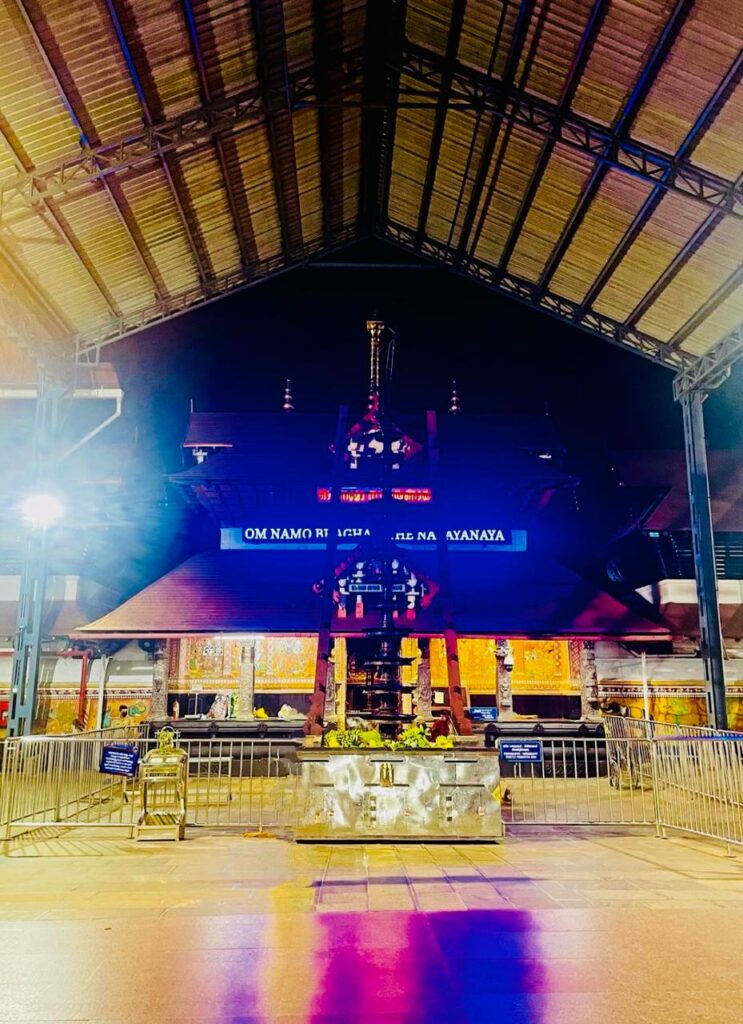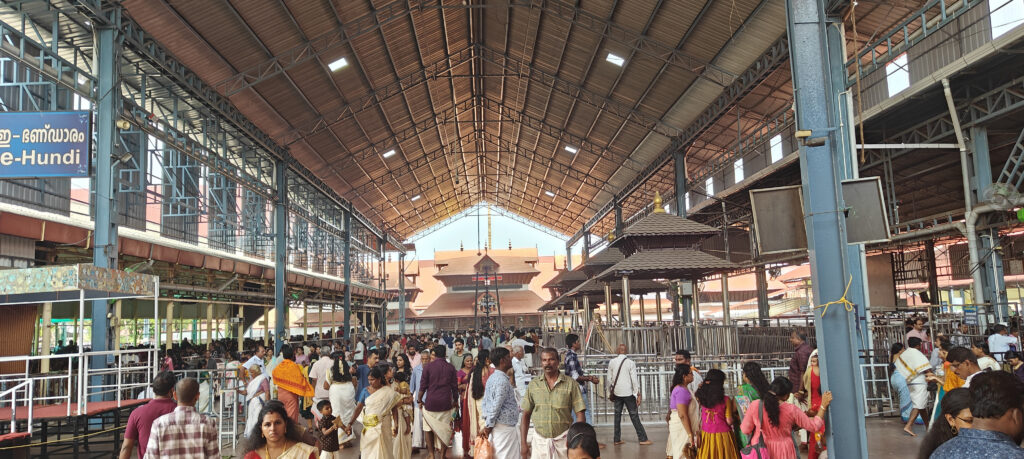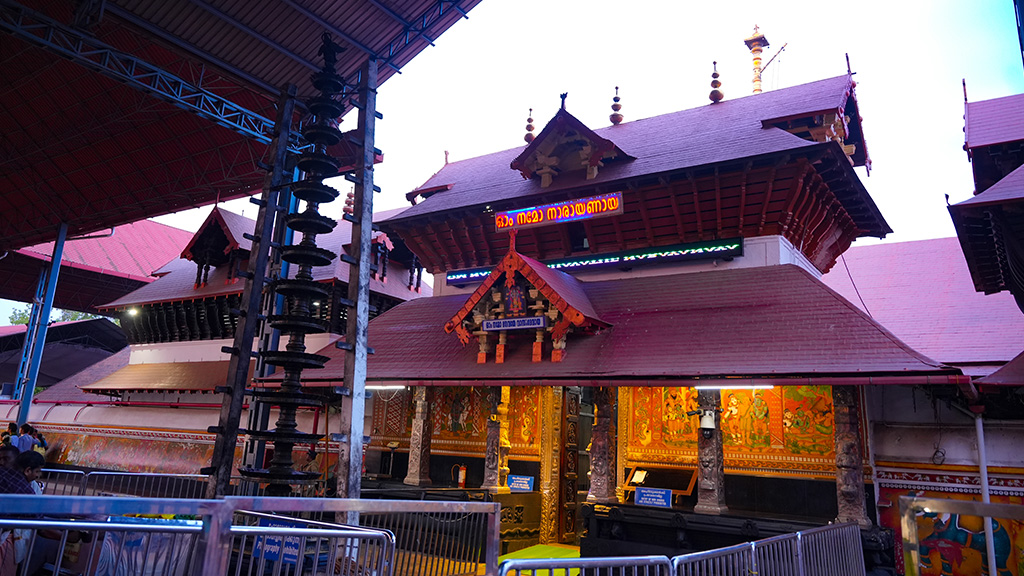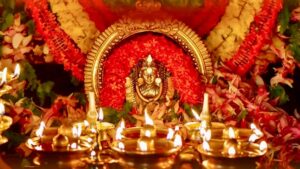Introduction:
Kerala, often called as “Gods Own Country”, is a land of diverse cultures and traditions. The evidence to this rich history are the temples here. Guruvayoor Temple is one such temple that stands as a devotion and spirituality. Guruvayur Temple holds a very special place in the minds of millions of devotees. The temple is one among the 108 Abhimana Kshetram of Vaishnavite tradition. We take you through the history, architecture, rituals, and significance of God Krishna of Guruvayoor Temple along with some practical information for travellers who wish to visit in this blog.
Quick Information
| Nearest Airport | Cochin – (COK) Approximately 75 Kms |
| Cochin – (COK) Approximately 75 Km | Approximately 2 hr 30 mins |
| Travel Option from Cochin Airport | Uber cab or Private taxi services are available from Cochin Airport |
| Nearest Railway Station | Guruvayoor (Station Code – GUV), Approximately 1Km. |
| Travel Time from Railway Station | Approximately 10 Minutes |
| Travel Options from Railway Station | Taxi, Autorickshaw |
| Nearest Bus Station | Guruvayoor Bus Station is well connected with all major towns |
| Dress Code | Traditional Indian dress is mandatory. Men in Dhoti and women in Churidar or Saree |
| Temple Timings | 03:00 AM to 01:30 AM and 04:30 PM to 09:00 PM |
Historical Background of Guruvayoor Temple:
About
The temple is dedicated to Lord Krishna and is believed to have been built in the 16th Century. A lot of legends and myths surrounds the history of the temple. According to a popular belief, the main idol was originally worshipped by Lord Brahma and later gifted to Lord Vishnu, who in turn gave it God Krishna. The origin of the Guruvayoor Temple can be traced back to Dvapara Yuga, one of the four ages in Hindu cosmology and it is believed that Lord Krishna himself installed the idol of Lord Guruvayoorappan.
The temple structure went into a lot of renovations and expansions under various rulers, including the Zamorins of Calicut. The magnificent structure that we see today is the result of these renovations and each era of architecture is evidently seen here. The idol is considered to be the most divine representation of Lord Krishna. The four-armed Vishnu carrying the conch Panchajanya, the discus Sudarshana, the mace Kaumodaki, and a lotus with a tulasi garland. The idol represents the form of Vishnu as revealed to God Krishna’s parents Vasudeva and Devaki at the time of his birth.
It is said that Adi Shankara laid described the routines for the worship and later was formally written down by Tantric way which arose in medieval India by Chennas Narayanan Namboothiri. His descendants are the hereditary Tantris (High Priests) of Guruvayoor Temple even now.
Architecture:
The architecture of Guruvayoor Temple is a classic example of the Kerala style of temple architecture. The layout of the temple is based on the traditional Vasthu Shastra principles which ensures that every aspect of the temple is in harmony with the cosmic energies.
A traditional gopuram (entrance tower) welcomes you to Guruvayoor temple which is surrounded by high walls. The sanctum sanctorum houses the idol of Lord Krishna or Guruvayoorappan. The deity is made of a stone called “Patala Anjanam” or black bismuth, and is in the standing pose with four arms, carrying the Panchajanya (shanku or conch), the Sudarshana Chakra (chakra or disc), the Kaumodaki (gada or mace) and Padma (lotus).
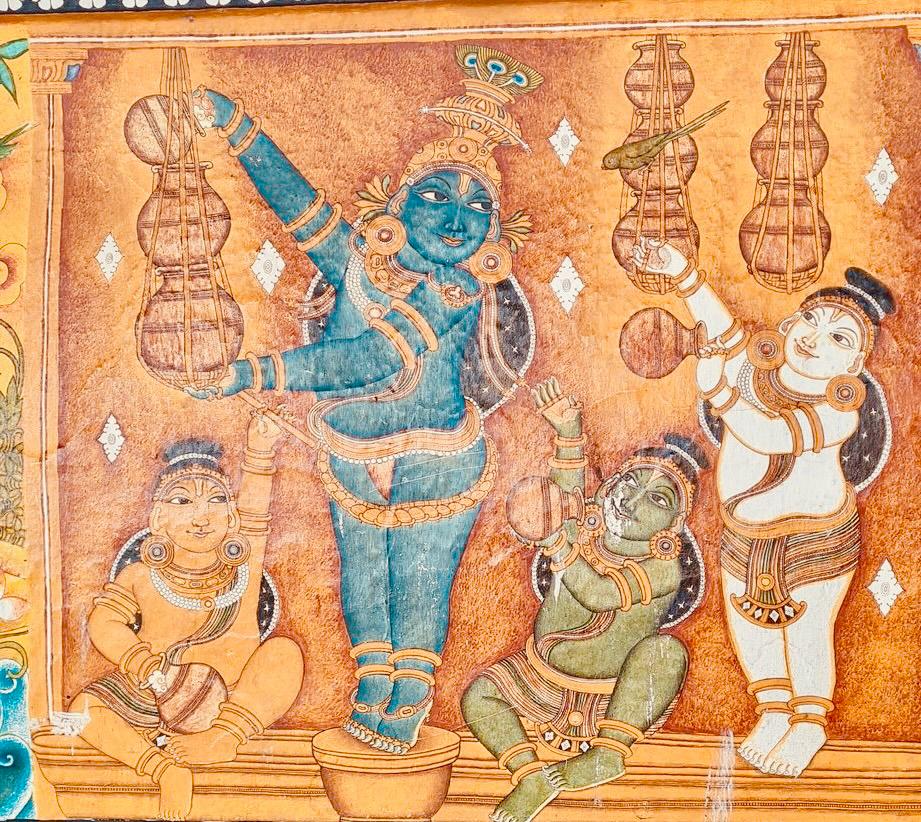
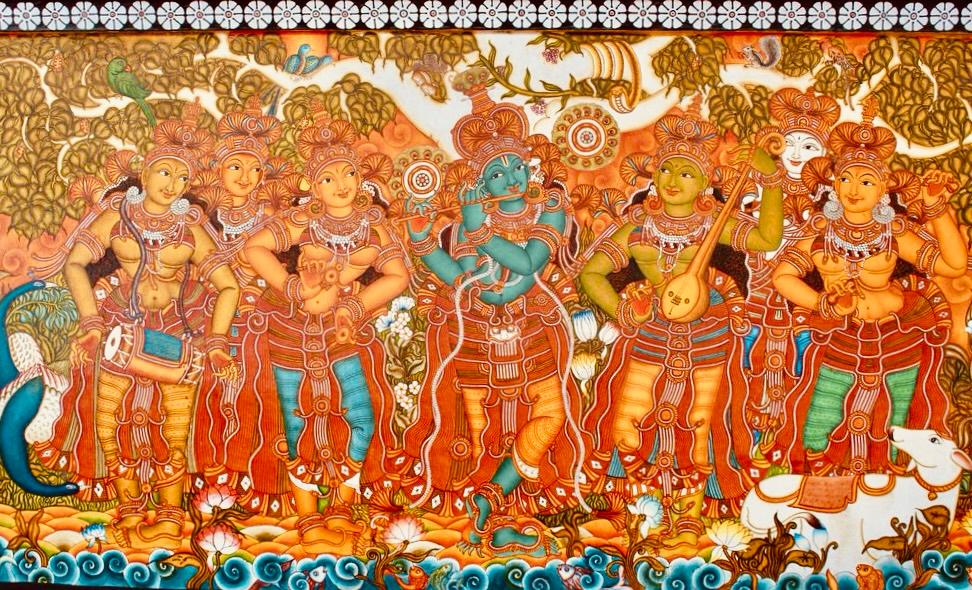
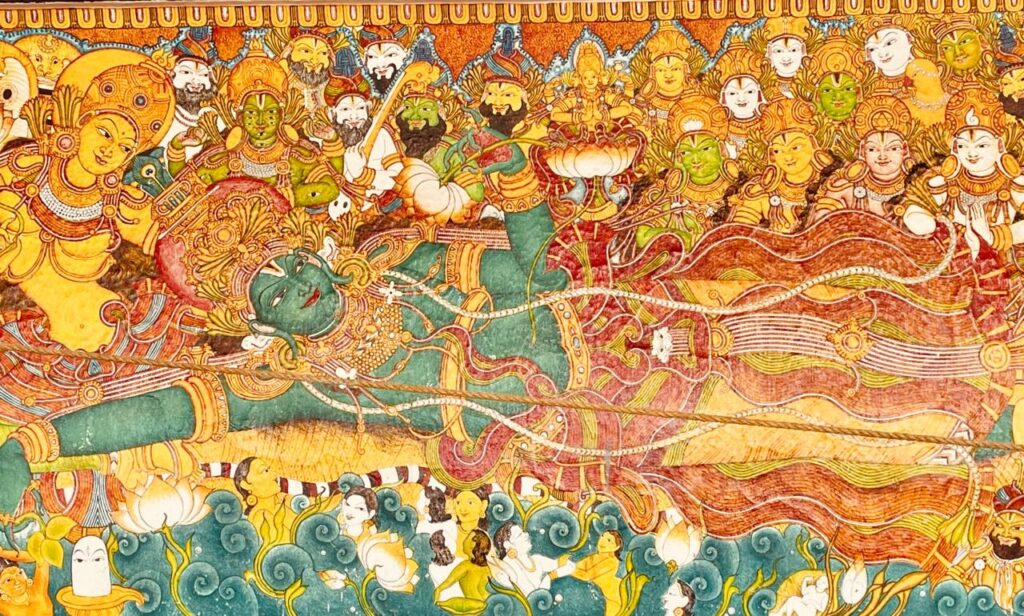
Rituals and Festivals:
The daily rituals and festivals at Guruvayoor Temple draw a lot of devotees from across the world. The ‘Niralyam’ ritual is conducted at the beginning of the day, which involves adorning the deity with fresh flowers, sandalwood paste, and sacred ash.
The other daily rituals include the ‘Udayasthamana Pooja’ (performed in 12 different sessions), ‘Chuttu Vilakk’ (when countless oil lamps are lit in the evening) which creates a magical ambiance. The ‘Guruvayoor Utsavam’ (conducted annually) is a grand celebration which lasts for 10 days in the Malayalam month of ‘Kumbham’ featuring colorful processions, cultural programs, and Kathakali performances.
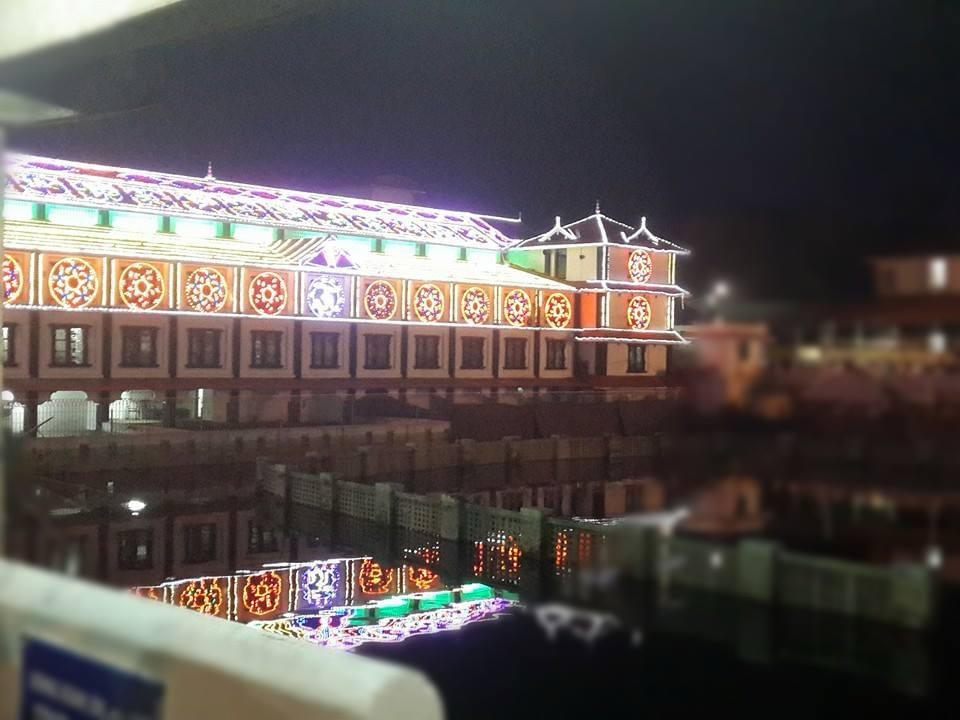
Offerings and Prayers:
Devotees reach the temple to offer various prayers and offerings to seek the blessings of Lord Krishna at Guruvayoor Temple. The ‘Krishnattam’ performance is unique to this temple. It is a dance-drama portraying the life of God Krishna. Devotees can offer ‘Thulabharam’ where they offer items equivalent to their body weight, symbolising the act of surrender and devotion. Pilgrims comes here with offerings like fruits, jaggery, and money, reflecting their heartfelt commitment to the god.
Spiritual Significance:
Guruvayoor Temple holds great spiritual significance for Hindus, especially devotees of Lord Krishna. It is believed that a visit to this temple and offering prayers with a pure heart can bring comfort, happiness, and prosperity in life.
Nearby Temples to Visit:
Surrounded by other temples Guruvayoor provides a great devotional experience. Mammiyur Mahadeva Temple, dedicated to Lord Shiva is a famous temple which showcases an architectural style that is distinct from Guruvayoor Temple. Shri Parthasarathy Temple on the other hand is an embodiment of the cultural and spiritual diversity of Kerala.
Exploring the Surrounding Beauty:
Apart from the spiritual attractions, Guruvayoor is a filled with the natural beauty of Kerala. The elephant sanctuary ‘Punnathur Kotta’, a place where you can watch elephants is very close to the temple. There is a fantastic museum where you can get a close look at the history and the role of elephants in Kerala’s culture. The ‘Punnathur Palace’ is a historic site with beautiful architecture and amazing gardens offering a glimpse of the royal past of the region. Explore these places to understand the cultural and natural beauty of Guruvayoor.
Best Time to Visit:
The winter months from October to February are ideal for a Guruvayoor pilgrimage due to the pleasant weather, the temple’s atmosphere during festivals like ‘Guruvayur Utsavam’ in February-March and ‘Ashtami Rohini’ in August is something truly extraordinary. Plan your visit to coincide with these festivals to witness the magnificence and devotion.
Accommodation Options:
Guruvayoor offers a wide range of accommodation options to cater to different budgets and preferences. From budget-friendly hotels like Mayura Residency to mid-range options like KTDC Nandanam and luxurious stays at Devaragam Hotel, you can choose accommodation that suits your needs. Make sure to book well in advance, especially during peak seasons and festivals.
Fine Dining:
Kerala’s cuisine is a culinary journey in itself. When in Guruvayoor, savor the flavors of authentic Kerala cuisine at local restaurants like Krishna Inn and Sreevalsam Restaurant. Try the delicious Kerala Sadya, a traditional way of food served on a banana leaf, and enjoy the rich and diverse flavors that make Kerala cuisine famous worldwide.
Guruvayoor Temple, like the Vadakkumnathan Temple, is a testament of cultural and spiritual heritage of Kerala. Its history, architecture, rituals, and significance make it a must-visit destination for anyone exploring Kerala’s rich religious destinations. Whether you are a on a pilgrimage or an enthustiastic traveler, Guruvayoor Temple will leave an permanent mark on your heart, reminding you of the profound spiritual essence of Kerala.
As we conclude, we hope that this blog has provided you with insights into the spiritual and cultural fusions of this sacred place, along with practical information to plan your visit to this amazing destination. Kerala’s temples continue to stand as enduring symbols of devotion, drawing people from all walks of life to experience the divine grace they offer.
